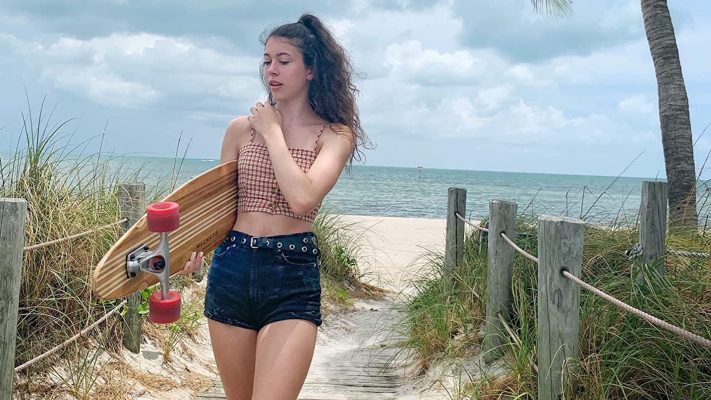Moonshot Brands today announced it secured $30 million in equity and $150 million in a credit facility that will be used, in part, to purchase assets from other e-commerce aggregators. Co-founder CJ Isakow said this was just the beginning of what he thought would be further consolidation in the crowded sector.
“A lot of funding announcements came out last year, and people were buying at the peak of COVID pricing, but now aggregators are starting to fail, and we are purchasing assets from some of them,” Isakow told TechCrunch.
The equity portion was led by Anthemis and included existing investors YC Continuity and Garage Capital. The credit facility is from Victory Park Capital. It now gives the company $180 million in total funding, Isakow said.
He considers Moonshot Brands, which you can read more about in this deep look into aggregators, to be a boutique company, focused on Amazon and direct-to-consumer brands globally, and initially in the mobility and action sports sectors.
However, Isakow doesn’t much care for the “aggregator” moniker. When he and co-founder Allan Fisch were getting started in 2020, they saw how similar companies, like Thrasio, were using debt capital to buy lots of brands and take them over. Instead, Isakow and Fisch wanted to be involved with entrepreneurs who would join Moonshot and run their own brands.
“We want to take them off of Amazon and don’t want to just buy EBIDTA, but build long-term brands,” Isakow added.
The assets Moonshot purchased were from Product Labs and include scooter brand La Scoota and fitness brand WOD Nation. Moonshot has nine brands, including Magneto Boards, and is now positioned to grow to over $100 million in trailing 12 months growth by the end of 2022.
Before you go thinking that Product Labs is failing, Brad Moss, co-founder of the company, told TechCrunch that the tech-enabled service company, started two years ago, was the company working behind the scenes with many of the aggregators, like Thrasio and 101 Commerce, to provide the software, data and other tools to build their brands.
When Product Labs brought in external money, that led to the creation of a holding company which purchased several different brands. When the investment group decided to break up the assets, those brands, including La Scoota and WOD Nation, were sold, Moss said. He now runs the company part and merged it with another company called Brandless.
E-commerce aggregators around the world still seem to be doing well and attracting venture capital. For example, in the past six months New Vessel, Una Brands and Nebula Brands, all in Asia, brought in new funds, as did Merama and Quinio in Latin America. Meanwhile another aggregator, Society Brands, which also encourages founders to lead their brands, secured $204 million last week.
And just today, Elevate Brands, which acquires and operates Amazon fulfillment businesses, announced a refinancing and upsizing of its credit facility to $400 million, led by funds and accounts managed by BlackRock. This brings the company’s funding total to $590 million and will enable Elevate to scale its portfolio to 45 brands, from 32, this year.
However, the crowded nature of the sector over the past few years has led to talk of eventual consolidation, something Taliesen Hollywood says is starting to happen.
The Hahnbeck director works on e-commerce M&A and follows the aggregator market. He cites as proof recent deals, including Olsam acquiring Flywheel Commerce and Berlin Brands Group acquiring Orange Brands. He also pointed to an early deal in 2020 for Thrasio when it acquired Thirstii, which Hollywood believed was “just an efficient way for Thrasio to expand to Germany.”
“Most of the aggregators are not in any urgent trouble though,” he added. “On the whole their portfolios are doing OK on average, and the one thing most of their acquisitions have in common is very strong — above 20% — net margins. Even the ones who are paused will return to the market in a few months once seller expectations come back down.”
Hollywood confirmed what Isakow said about buying in the peak of the market as one of the drivers to a change in the sector.
Currently, he sees aggregators bidding fiercely for the most attractive assets, which is a small minority of the businesses they look at, and presenting much lower offers on the rest. On the seller side, he notes that they are expecting higher valuations than ever.
In fact, he has heard some sellers are approaching aggregators and saying things like “We will only talk to you if you can guarantee us a 5.5-time multiple of seller’s discretionary earnings before we even start discussions,” Hollywood said.
“Aggregators need to lower their average acquisition multiples — last year they wanted to — but we are getting a strong sense that now they need to,” he added. “Several of the aggregators are dealing with this by pausing acquisitions altogether. The rest are becoming much more cautious or highly focused on specific categories. Meanwhile their marketing and deal origination departments are still actively reaching out to sellers, giving sellers the impression that the market is still extremely buoyant. It will take a few months for this to normalize.”
[ad_2]
Source

